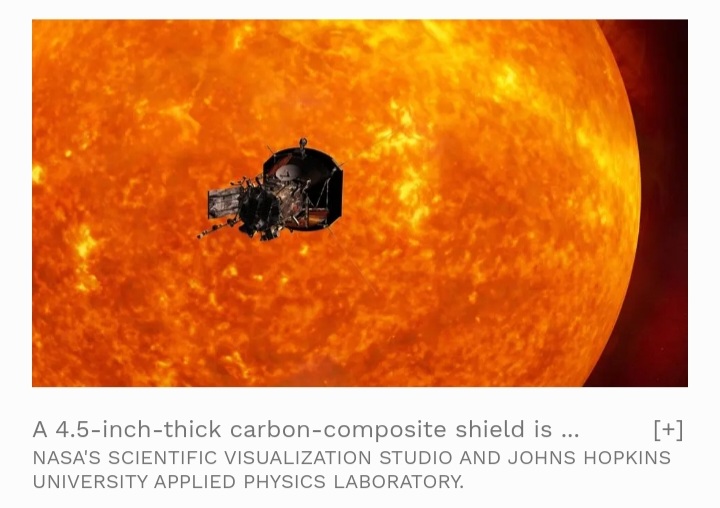Why NASA’s Sun-Touching Spacecraft Remains Out Of Contact
NASA’s Parker Solar Probe remains out of contact on Christmas Day after its historic achievement on Dec. 24 when it got closer to the sun than any human-made object.
The mission to “touch the sun” reached a mere 3.86 million miles (6.1 million kilometers) from the surface of the sun, the closest NASA has got to any star. It’s currently inside and helping scientists understand the sun’s mysteriously hot outer atmosphere, its corona.
However, the close pass took place on the other side of the sun, as seen from Earth’s perspective. Mission operators at the Johns Hopkins Applied Physics Laboratory in Laurel, Maryland — where the spacecraft was also designed and built — have been out of contact with Parker ever since.
Waiting For A ‘Beacon Tone’
It’s due to send a beacon tone on Dec. 27, 2024, to confirm that the probe has survived one of the most extreme environments in the solar system. It’s hoped that its robust heat shield will protect its instruments.
“No human-made object has ever passed this close to a star, so Parker will truly be returning data from uncharted territory,” said Nick Pinkine, Parker Solar Probe mission operations manager at APL. “We’re excited to hear back from the spacecraft when it swings back around the sun.”
Autonomous Design
The three days out of contact with Earth was expected and planned in the design of the spacecraft. “When it is flying near the sun, it has to be 100% autonomous,” said Dr. Nour Raouafi, the project’s scientist at the Johns Hopkins Applied Physics Laboratory, during a media roundtable at the American Geophysical Union’s annual meeting on Dec. 10, 2024. “We cannot do anything to it if it encounters any problem — it has to deal with it on its own.”
The autonomous system built into the spacecraft can continuously work for nearly two months without human intervention.
Next Status Update
“This is one example of NASA’s bold missions, doing something that no one else has ever done before to answer longstanding questions about our universe,” said Arik Posner, Parker Solar Probe program scientist at NASA Headquarters in Washington. “We can’t wait to receive that first status update from the spacecraft and start receiving the science data in the coming weeks.”
Parker is traveling at 430,000 mph (690,000 kph), making it the fastest-ever human-made object, fast enough to get from Philadelphia to Washington, D.C. in one second, according to the mission’s website.
Parker’s close pass is the first of three to get within 4% of the Earth-sun distance. The second two will take place on Mar. 22 and Jun. 19, 2025.


Source:- Forbes
Now Playing: Love Bug
Aretti Adi
SPONSORED LINKS
LOAN FOR TRAVEL, VISA, JAPA, PoF UP TO N200M (CLICK HERE)
[CLICK HERE] For Music Artwork, Website Design And SEO Setup
INSTALL 9JAFLAVER MUSIC APP, STREAM, DOWNLOAD, AND PLAY MUSIC OFFLINE
CHECK OUT FUNNY PICTURE AND MEME HERE (CLICK HERE)
Chissom Anthony – Glory To God In The Highest [See Trending Gospel Song]
Copyright © 2014-2025 9jaflaver. All Rights Reserved.
About us | DMCA | Privacy Policy | Contact us
| Advertise| Request For Music | Terms Of Service
9jaflaver is not responsible for the content of external sites.